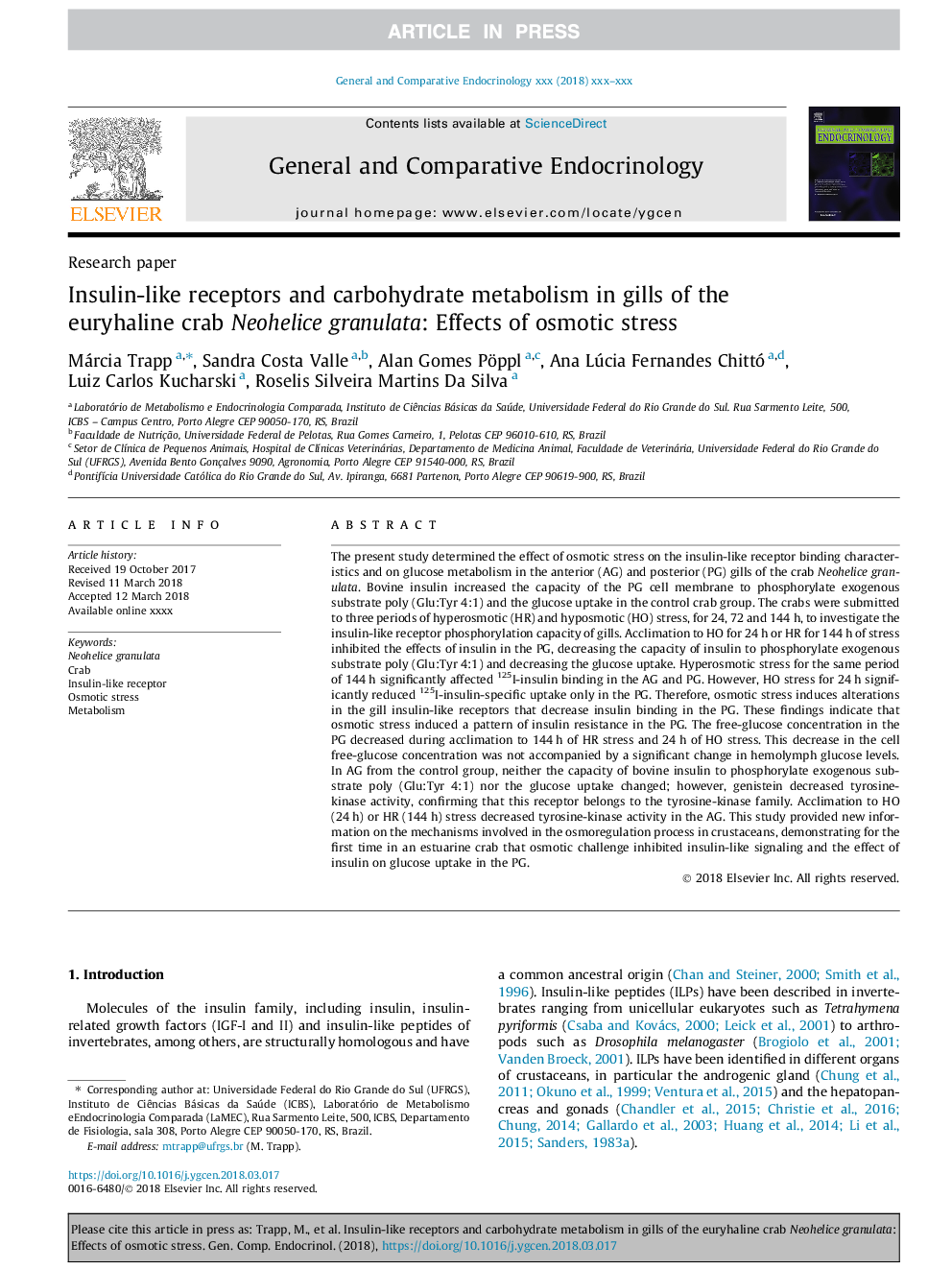| Article ID | Journal | Published Year | Pages | File Type |
|---|---|---|---|---|
| 8630925 | General and Comparative Endocrinology | 2018 | 9 Pages |
Abstract
The present study determined the effect of osmotic stress on the insulin-like receptor binding characteristics and on glucose metabolism in the anterior (AG) and posterior (PG) gills of the crab Neohelice granulata. Bovine insulin increased the capacity of the PG cell membrane to phosphorylate exogenous substrate poly (Glu:Tyr 4:1) and the glucose uptake in the control crab group. The crabs were submitted to three periods of hyperosmotic (HR) and hyposmotic (HO) stress, for 24, 72 and 144â¯h, to investigate the insulin-like receptor phosphorylation capacity of gills. Acclimation to HO for 24â¯h or HR for 144â¯h of stress inhibited the effects of insulin in the PG, decreasing the capacity of insulin to phosphorylate exogenous substrate poly (Glu:Tyr 4:1) and decreasing the glucose uptake. Hyperosmotic stress for the same period of 144â¯h significantly affected 125I-insulin binding in the AG and PG. However, HO stress for 24â¯h significantly reduced 125I-insulin-specific uptake only in the PG. Therefore, osmotic stress induces alterations in the gill insulin-like receptors that decrease insulin binding in the PG. These findings indicate that osmotic stress induced a pattern of insulin resistance in the PG. The free-glucose concentration in the PG decreased during acclimation to 144â¯h of HR stress and 24â¯h of HO stress. This decrease in the cell free-glucose concentration was not accompanied by a significant change in hemolymph glucose levels. In AG from the control group, neither the capacity of bovine insulin to phosphorylate exogenous substrate poly (Glu:Tyr 4:1) nor the glucose uptake changed; however, genistein decreased tyrosine-kinase activity, confirming that this receptor belongs to the tyrosine-kinase family. Acclimation to HO (24â¯h) or HR (144â¯h) stress decreased tyrosine-kinase activity in the AG. This study provided new information on the mechanisms involved in the osmoregulation process in crustaceans, demonstrating for the first time in an estuarine crab that osmotic challenge inhibited insulin-like signaling and the effect of insulin on glucose uptake in the PG.
Related Topics
Life Sciences
Biochemistry, Genetics and Molecular Biology
Endocrinology
Authors
Márcia Trapp, Sandra Costa Valle, Alan Gomes Pöppl, Ana Lúcia Fernandes Chittó, Luiz Carlos Kucharski, Roselis Silveira Martins Da Silva,
